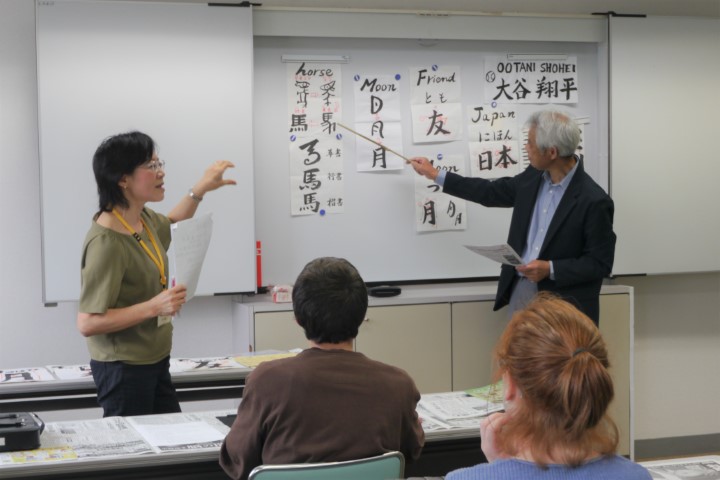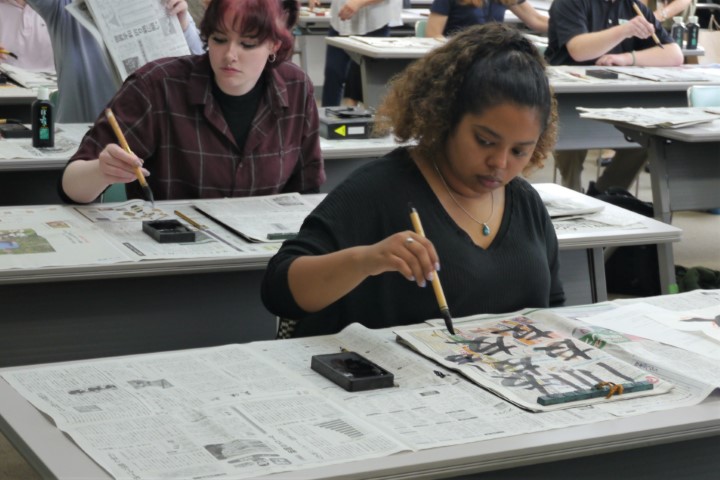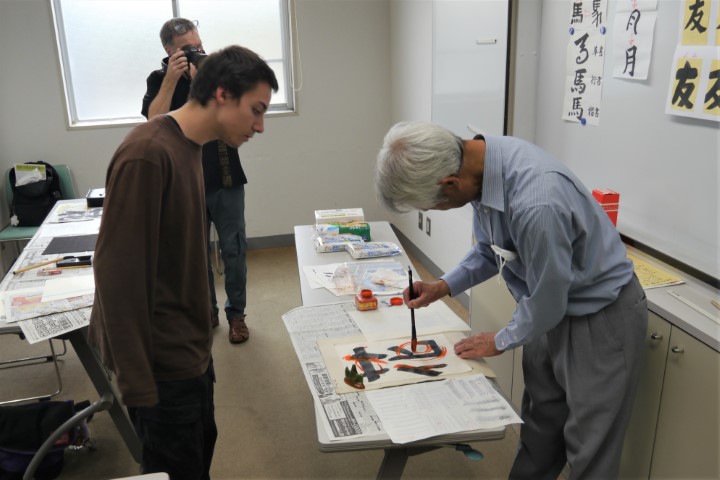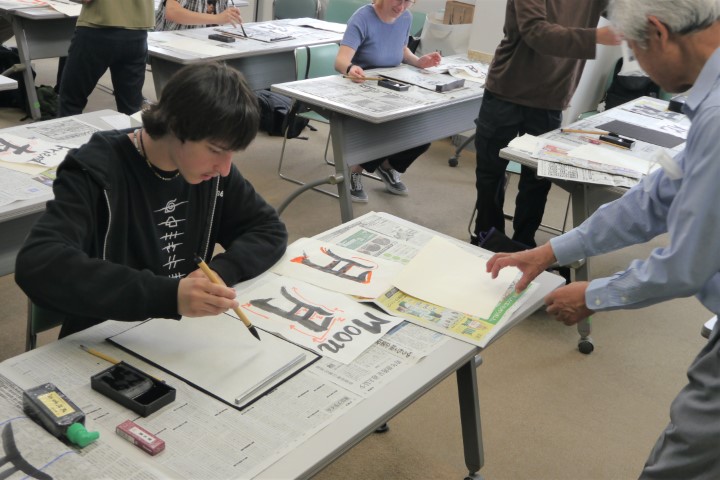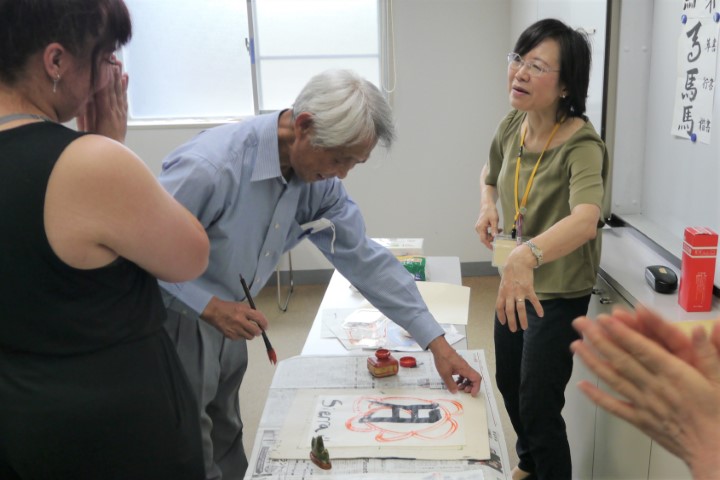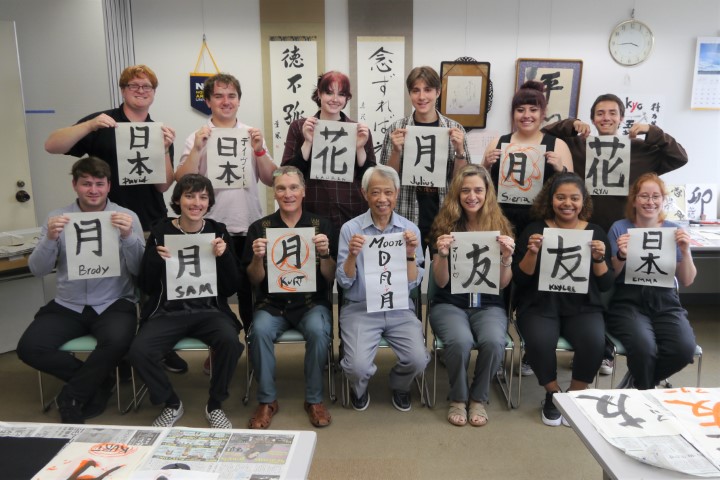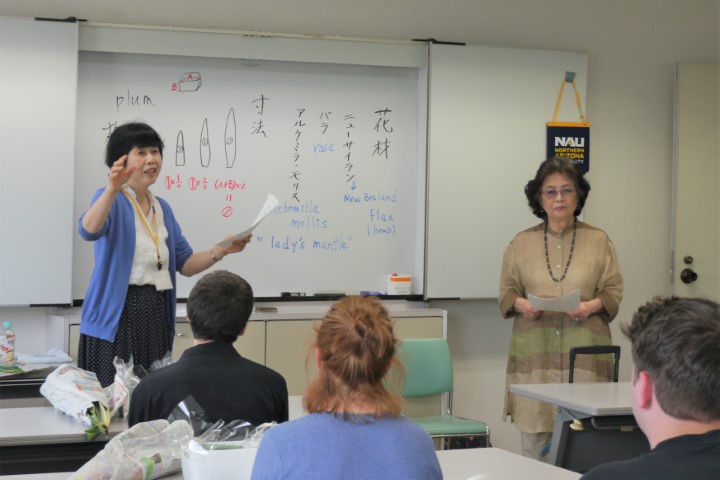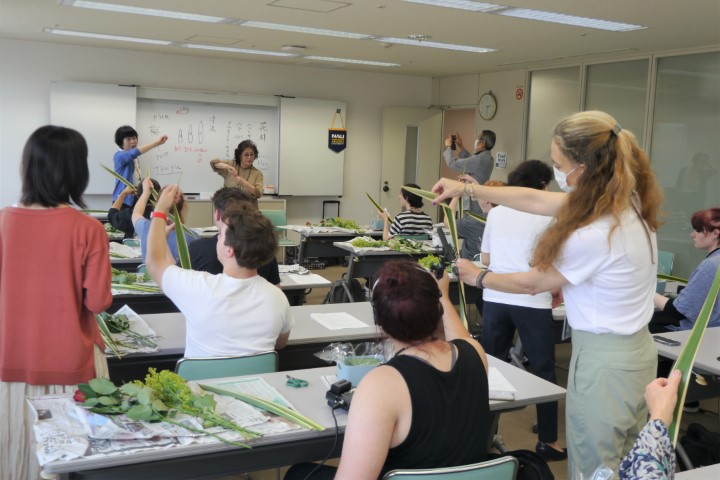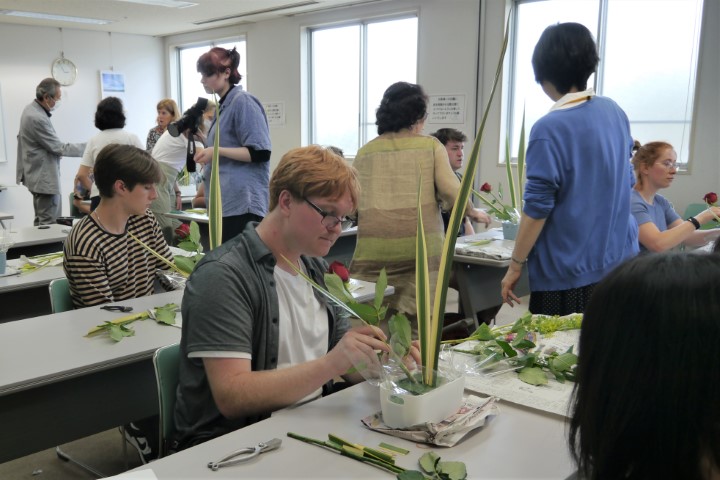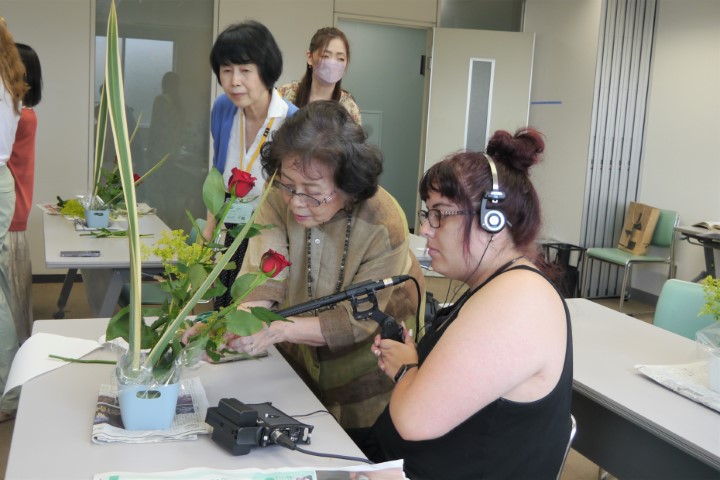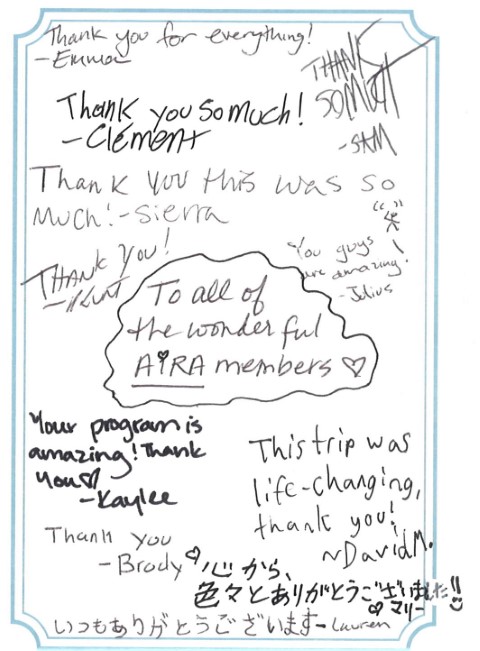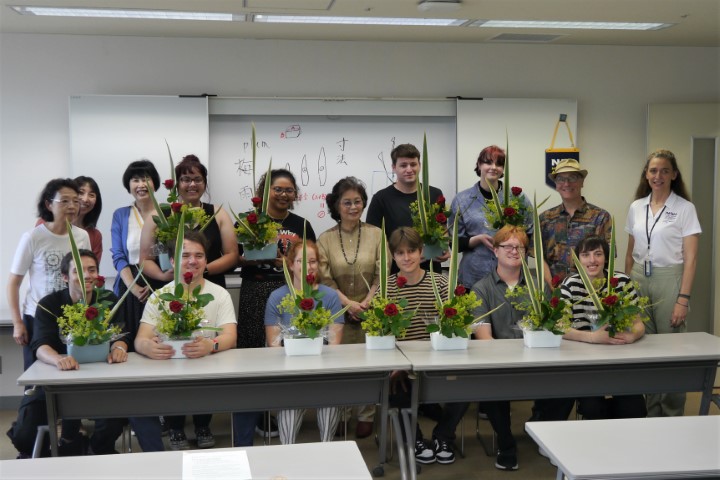
AIRA sent translators to help the students of Northern Arizona University (NAU) experience Japanese cultures in Abiko City. (No.23-5)
日本文化体験内容及び通訳派遣日The dates of their cultural experiences with AIRA translators
・習字:2023年6月10日(土)Japanese calligraphy : Saturday, June 10th, 2023
・着物着付け:6月11日(日)Kimono wearing : Sunday, June 11
・生け花:6月13日(火)Ikebana : Tuesday, June 13
・ビデオ編集:6月14日(水)Video editing : Wednesday, June 14
一行は、Mr.Kurt Lancaster教授と学生10名で、元AIRA英語講師のMs. Mary Adachiさんの案内で来日しました。学生は、コミュニケーション学科Creative media & film school of communicationです。日本各地を回るとともに、我孫子では日本の文化を体験します。
NAU Professor Kurt Lancaster and his ten students are visiting Japan with the guidance of Ms. Mary Adachi, a former AIRA English instructor. The students belong to NAU’s School of Communication, Film and Media Studies.
習字と生け花体験について、紹介します。
The below is how the “Calligraphy” and “Ikebana” classes were held.
1、習字Japanese Calligraphy Class
会場:あびこ市民プラザ 会議室1 Venue : Abiko Civic Plaza Room 1
日時:2023年6月10日(土)14:00~16:00 Date & Time : Saturday, June 10 2:00 p.m. – 4:00 p.m.
講師:荒井茂雄(号:童風)さん ※AIRA会員 Instructor : Mr. Shigeo ARAI (art name: 童風Dofu), AIRA member
通訳:濱 理恵さん Interpreter : Ms. Rie HAMA
荒井講師は、漢字の成り立ちや日本への伝来の歴史、書く道具である「文房四宝」(筆・墨・硯・紙)について説明し、濱さんが通訳しました。
Mr. Arai explained the structures of kanji (Chinese characters) and the history of their introduction to Japan, and “文房四宝”, the four essential tools used in Chinese/Japanese calligraphy (brush, ink, inkstone and paper). Ms. Hama interpreted his lecture.
書く字は、友・月・日本・花の中から選びます。学生たちは初めての体験で、書いては荒井講師に直され、再び書くを繰り返し、徐々に「書」になってきました。
The students chose one character that they wanted to write from “友friend, 月moon, 日本Japan and 花flower). Writing calligraphy with brush and ink was their first experience. They repeated writing and each time Mr.Arai kindly corrected their work and gradually their writing became “calligraphy.”
2、生け花 Ikebana Class
会場:あびこ市民プラザ 会議室1 Venue : Abiko Civic Plaza Room 1
日時:2023年6月13日(火)14:00~16:00 Date & Time : Tuesday, June 13 2:00 p.m. – 4:00 p.m.
講師:柴田保子(号:香蒲)さん <小原流> Instructor : Mr. Yasuko Shibata (art name: 香蒲Koho), Ohara School
通訳:山口千鶴さん、小山仁美さん Interpreter : Ms. Chizu Yamaguchi, Ms. Hitomi Koyama
四季に咲く花や葉・枝などの花材を花器に行ける生け花の歴史や流派の特徴を説明し、山口さんが通訳しました。面を活かした盛花様式で表現する小原流に従い、学生たちは始めは花を配置していました。柴田講師とお弟子さんが席を回りながら直していくに従い、学生たちは花を見せる様に「生け」ました。最後は各自の個性が見られる美しい出来栄えでした。
Ms. Shibata explained the history of Ikebana, the art of arranging flowers, leaves and branches in a vase called “花器 flower bowl.” She also explained the main styles of Ohara School that she belongs to. Ms. Yamaguchi interpreted her lecture. According to one of the major styles of Ohara School, “Moribana”, which features nature reproduced in a shallow vase, the students tried to arrange flowers and leaves. As the instructor and her assistant walked around the room and gave each of them advice, their works got livelier and, adding their own originality, they finally completed their beautiful “Ikebana”, which means “to make flowers alive again,
生け花と盆栽の違いは? 生け花とアートフラワーの違いは?等の質問が出るなど学ぶところが多かった様です。
They asked Ms. Shibata questions like “What’s the difference between Ikebana and Bonsai?”, “How about Ikebana and western flower arrangement?” It seemed they learned a lot about Ikebana.
(Translated by Chizu YAMAGUCHI)

